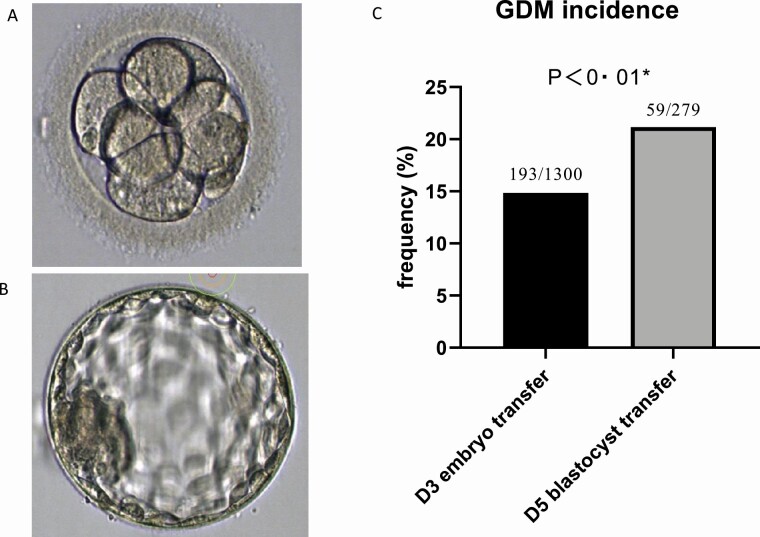Figure 1.
(A) typical human day-3 embryo. (B) Typical human day-5 blastocyst. (C) Bar graphs showing a comparison of gestational diabetes mellitus (GDM) incidence in women receiving just embryos or women receiving at least one blastocyst. *Groups were compared by chi-square test. The morphology and size of the day-3 embryo and the day-5 blastocyst differed substantially indicating a fast development and differentiation during these 2 days of early human life. Blastocyst transfer is an independent GDM risk factor. Yet unknown factors that influence embryo/blastocyst development are potentially also factors that increase the GDM risk later during pregnancy. The blastocyst transferred at day 5 after fertilization might differ substantially from normal blastocysts after natural conception and may later release or stimulate the maternal release of transmitters/hormones promoting GDM development. Abbreviations: D3, day 3; D5, day 5.

